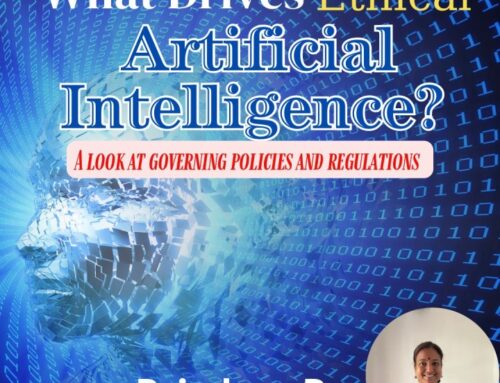The Internet of Things (IoT) has now become the digital disruptor with new entrants of Retail Banking Services by 2020, which is rapidly morphing the future of both efficient operations and customer experience which will experience both challenges and opportunities.
“Banking of Things” is the buzz for the Financial Industry with the evolution of the IoT reshaping the traditional banking systems to the next-gen digitised business models focusing on customer-centric innovation.
Gartner predicts that there will be 25 billion smartphones, wearables, smart watches, connected cars, and other connected devices by 2020 leading to the top six priorities for 2020 as outlined in a report by PwC.
1. Developing a customer-centric business model: For the Banking Industry to be ahead of the game, they need to develop a complete understanding of their customer and be able to design and simplify their products and services for delivering enhanced user-experience with lower operational risks. The emphasis is on understanding the customer needs and not with pricing or products.
2. Optimising retail delivery: By 2020, all banks will become direct banking, and they will offer an anywhere, anytime service, fully utilising all channels of banking in an integrated approach. The banks will be re-defining their new branch methods, physical footprints, expansion of physical presence through third-party partnerships, cutting costs, and driving sales. As the sales and transactions shift to digital channels, banks or branches that cannot create incremental growth or value will need to be transformed or shut-down.
3. Simplifying business and operating models: Banks to-date have only developed a staggeringly complex and expensive business and operating models. With the rising customer expectations, the regulators and shareholders demand good ROI. Simplification requires the organization, operations, channels, or products need to be simplified and changed, leading to reduced operational costs and risks and enhanced customer experience.
4. Obtaining an information advantage: Banks who can create a competitive edge in the areas of financial or cost management, risk management, operations, pricing, and underwriting, and customer experience will be able to analyse, integrate and act on the insights from the ever-growing mass of data.
5. Enabling innovation, and the capabilities required to foster it: Innovation is the foremost factor driving sustainable bottom-line and top-growth in banking. However, banks are not the places where innovation thrives. Banks need to become agile in their developmental process, opening to partnerships with external institutions, enabling and nurturing talent for it to be considered a favored destination for innovations.
6. Proactively managing regulations, risk, and capital: Today, the rules are complex, and the regulators are less flexible and more suspicious in their demands to improve, the underlying business processes and data, reporting, and compliance. Top banks are taking a more comprehensive approach which is proactive, pragmatic, and integrated into “Business as Usual” to manage their regulatory obligations.
However, there are still further advancements in the following four major areas which is going to have a significant impact in the world of Retail Banking:
1. New kinds of financial instruments: As the digital wallet proliferates at grass-root level of rural & urban demography, and digital wallets have become one of the most preferred or trusted ways of doing any types of financial transactions. The App-based financial instruments are a rage today that will eliminate the existence of both traditional and physical banking systems.
Third-party non-banking vendors like Digital wallets like Pockets, BHIM, Venmo, LevelUp, VeriFone SAIL, Square, GoPayment, PayAnywhere, Google Wallet, Apple Pay, Grab Pay, and many other wallets have revolutionised the entire banking ecosystem.
These portfolios offer a gamut of whole new features, unlike the conventional banking models. They provide credit points for every transaction made which can be redeemed for various benefits furnished by that wallet such as Gift cards, or the redemption of rewards, etc. are the conversion of services to financial instruments.
2. Fast movements of Money: This is an era where every individual’s life is dominated by the device called “Mobile or Smart Phone ” which has given birth to the ‘Mobile Banking.’ Today, 86% of the population especially the millennials use mobile banking while other generations are not far beyond. The mobile banking will probably be a trend until the old guard banking system (from paper cheques to EMV chip cards) is completely sunset and replaced by wearables while mobile banking system continues to make in-roads globally.
In today’s day and age, everyone needs instant access to the funds digitally. No one has the luxury of time to go an ATM or bank for making payments or withdrawing funds. This dire need of instant funds have enabled the Mobile banking to enable the consumers to connect to their accounts, pay bills, transfer funds, and more instantly all from a single and secure through the mobile banking platforms.
3. Block Chain technology & Bitcoins: The digital transformation of Block Chain & Bitcoins has revolutionised the Financial Industry by eliminating the existence of the banking systems and third-party vendors. The advent of blockchain is the cause of technological innovation of Bitcoin although bitcoin is not regulated by the central authority.
However, the bitcoin users validate and dictate the transactions when one person pays another for goods or services, eliminating the third party for processing the store payments. The transactions are publicly recorded into blocks and eventually into blockchain. This transaction is verified by other bitcoin users.
The distributed ledger technologies (DLT) adoption will bring phenomenal cost savings by making it possible for banks and businesses to streamline the operational systems internally, dramatically reducing the mistakes, expense, and delays caused by the traditional banking method for reconciliation of records. The DLT systems will be reducing the overhead of workforce in the back offices which also means less capital being blocked in the workforce and against the pending transactions. Blockchain will shake things up in the Banking Industry.
4. Regulation of Digital Currency: The evolution of ‘digital currency’ posed for the ‘rise of central-banking systems’ to proactively and rapidly adapt to a wide range of analytical tools and data gathering to learn more about the individual institution’s activities and overall systemic events. The regulators are also hoping to monitor the Industry more effectively to predict the potential issues other than the regulating facts. The Consumer Financial Protection Bureau (CFPB) in the United States focuses on consumer protection and has invested heavily in the digital technology and analytics.
Similarly, the Financial Conduct Authority (FCA) in the UK is taking steps to ensure that the financial institutions are not abusing their newfound ‘big data power.’ The FCA is closely monitoring how the insurance firms are using their large volume of data collections using social media data and web analytics. Likewise, other European Union (EU) regulators are looking into the challenges and opportunities related to the use of big data and analytics to check if the current supervisory measures and regulations are sufficient.
The regulators are trying to outline the right measures to ensure hundred percent protection from the Cyber Security threats which don’t exist today. For example: Recently I visited my bank to sort out an issue related to my account freeze. The officer at the counter used my email id to view my account details. This immediately made me realise that the banks are not mandating the ‘Multimodal’ biometric authentication system for accessing my details.
The Single modal authentication feature is a major setback as it is quite easy for anyone to hack into the system just by getting access to my email id from the social media platform. I realised that the advancements had posed more challenges rather than helping me feel safe and secured. I strongly recommend the ‘CTOs/CIOs’ and regulators to ensure that they mandate the Financial Institutions and the Industry stakeholders for provisioning the Multimodal Biometric Authentication.
To summarise, I believe that there is lot needs to be addressed within the Financial Services Industry as the security issues are humungous. Internet of Things though in its adolescence stage is revolutionising the ‘Banking of Things.’




